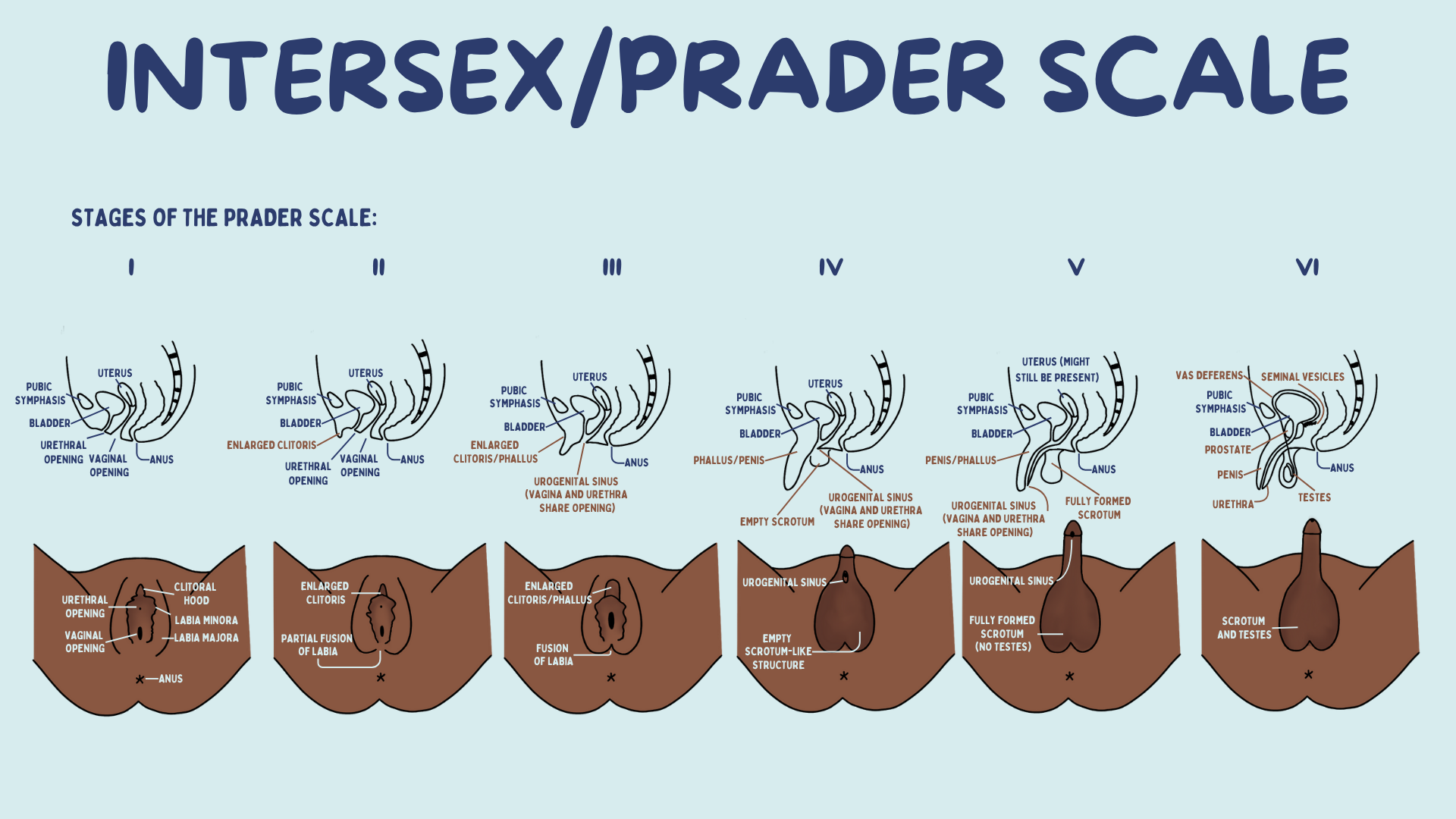Beyond the Gender Binary: Celebrating Transitioning Bodies
Let’s learn more about gender non-conforming/transitioning bodies!
To begin, gender is not a binary thing. Gender is how someone identifies, which is subjective. Sex is biological, how someone is born/their genes. People can be XX, XY, XXY, YYX. XXY and YYX are examples of intersex; however, intersex people can have XX or XY chromosomes and still be intersex. Some intersex people are born with multiple genital types, and in cases like this, the parents might choose an organ for the child to keep and raise them as one gender.
Intersex genitalia are often viewed on a spectrum using a popular tool called The Prader Scale, a way to measure the virilization or differentiation in intersex genitalia on a scale of average female genitalia to average male genitalia. It is broken into 6 stages, with each stage representing differentiation of genital anatomy. There is some controversy with the scale as it is based on "typical" and "atypical" genital assessments, which can be subjective. Check out the image below for a visualization of the Prader Scale.
Going back to gender, people can identify as men, women, non-binary, all gender, no gender, etc. no matter what sex they are. Fun fact: there’s over 72 genders; there’s technically an infinite number of genders!
If someone identifies with a gender they were not assigned to at birth (or gender associated with their sex assigned at birth), they might have gender dysphoria. An example of this would be a trans man (someone assigned female at birth) who went through puberty and grew breasts, might have gender dysphoria – feeling psychological distress because their body does not match their gender. This can be mediated by doing gender-affirming actions, socially and/or medically.
Social affirmation: changing one’s pronouns and/or name. This can be done legally and/or socially.
Medical affirmation: gender-affirming hormones or puberty blockers (if puberty has not occurred).
Medical/Surgical affirmation: top surgery, breast implants, facial feminization surgery, chest masculinization surgery, vaginoplasty (creating a vagina and vulva), phalloplasty, metoidioplasty, etc.
So, what do genitals look like after medical transitioning? They might look something like this:
One thing to note is that gender affirming medical or surgical procedures can affect one’s ability to have future children if they would like to. Some people may choose to freeze their eggs or sperm before medically transitioning.
Happy Pride Month! We hope you enjoyed learning about transitioning bodies!
Sources:
https://www.psychiatry.org/patients-families/gender-dysphoria/what-is-gender-dysphoria
https://www.thetrevorproject.org/wp-content/uploads/2019/10/Coming-Out-Handbook.pdf
https://www.medicalnewstoday.com/articles/types-of-gender-identity#fa-qs


